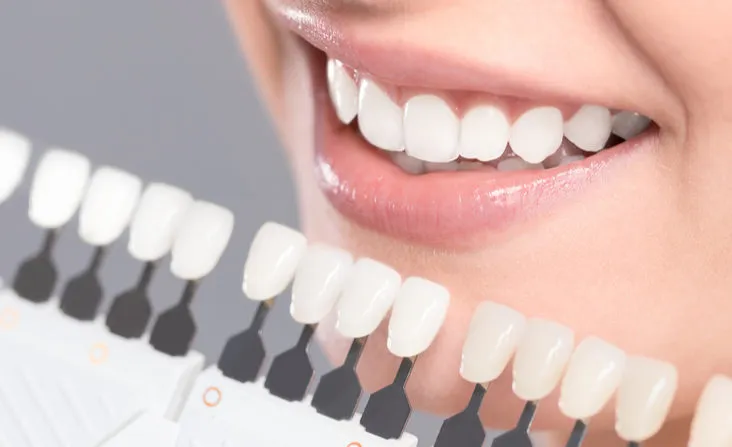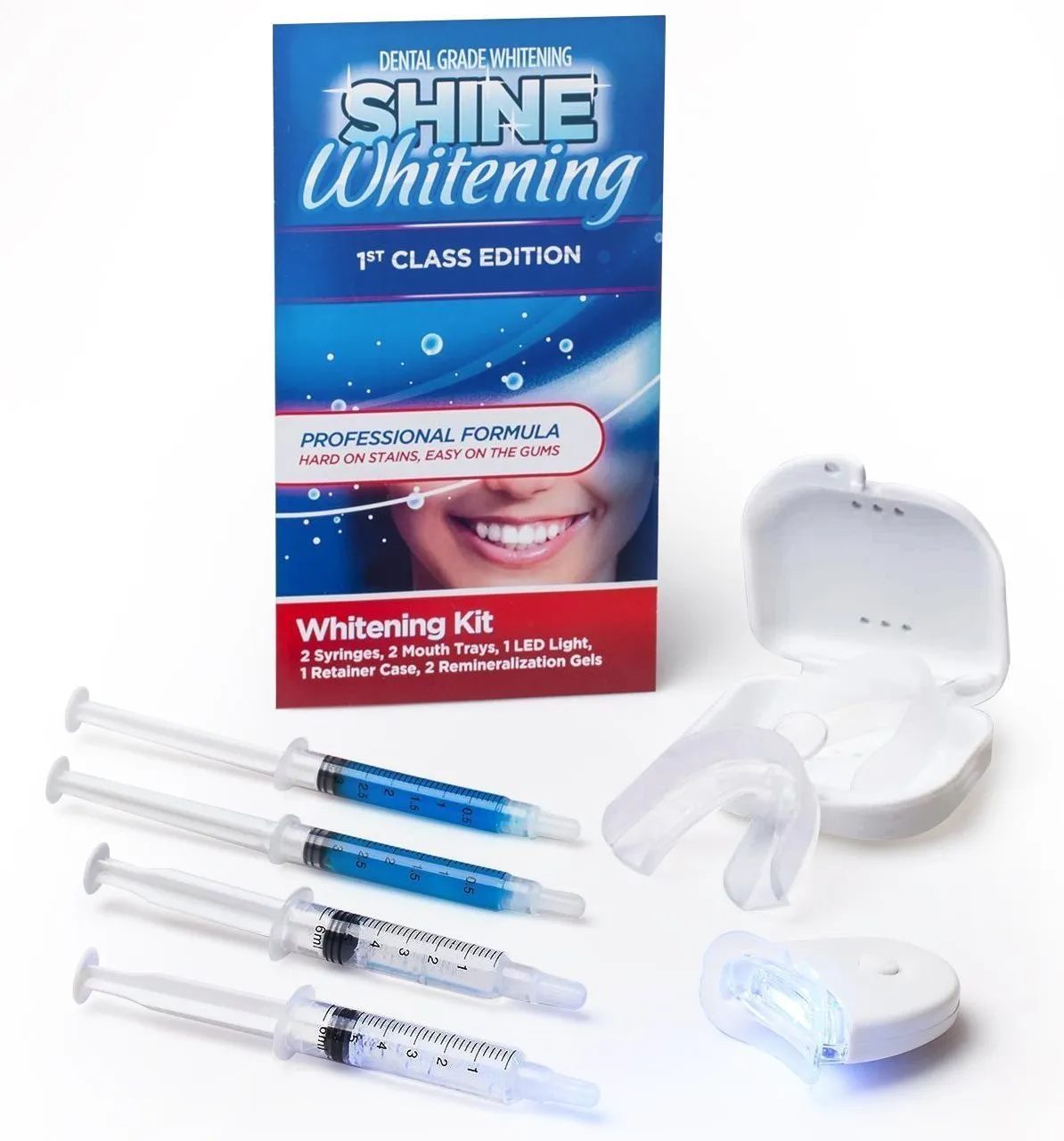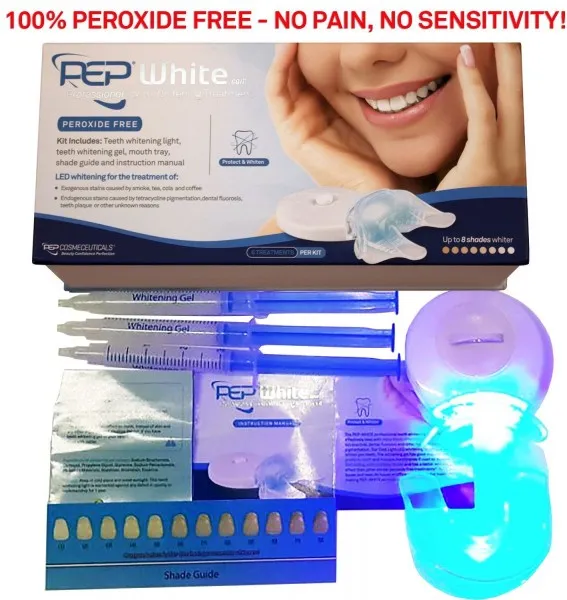Understanding Sensitive Teeth and Whitening
Many individuals in the UK experience tooth sensitivity, a condition that can make everyday activities, such as consuming hot or cold foods and drinks, quite uncomfortable. When considering teeth whitening, it’s essential to understand how these treatments interact with sensitive teeth. The goal is to achieve a brighter smile without exacerbating existing sensitivity or causing new issues. This guide explores the best teeth whitening options for sensitive teeth available in the UK, providing expert advice to help you make informed decisions and achieve a confident, pain-free smile.
What Causes Tooth Sensitivity?
Tooth sensitivity arises when the enamel, the protective outer layer of the tooth, thins or erodes, exposing the underlying dentin. Dentin contains tiny tubules that lead to the tooth’s nerve. When these tubules are exposed, stimuli like temperature changes or pressure can irritate the nerve, causing a sharp, temporary pain. Several factors contribute to enamel erosion, including aggressive brushing, consuming acidic foods and drinks, teeth grinding, and certain dental procedures. Understanding the root causes of sensitivity is the first step toward choosing the right whitening solutions.
Common Triggers for Tooth Sensitivity

Identifying specific triggers can help in managing sensitivity. Common culprits include cold beverages, hot foods, sugary items, and acidic substances. Certain dental treatments, such as teeth whitening, can also temporarily increase sensitivity. Furthermore, poor oral hygiene practices or the use of abrasive toothpaste can contribute to enamel erosion and heighten sensitivity levels. Recognizing these triggers allows for targeted preventative measures and informed choices when considering teeth whitening options. Avoiding or mitigating these triggers can significantly improve comfort and reduce the impact on daily life.
How Whitening Affects Sensitive Teeth
Teeth whitening treatments often contain bleaching agents, typically hydrogen peroxide or carbamide peroxide. These chemicals can penetrate the enamel to lighten the tooth’s color. However, they can also irritate the dentin, potentially increasing sensitivity. The intensity of the sensitivity depends on the concentration of the bleaching agent, the duration of the treatment, and the individual’s existing sensitivity level. Therefore, selecting whitening products specifically designed for sensitive teeth and following professional advice are essential for minimizing discomfort and achieving the desired results. The goal is to whiten teeth effectively without compromising oral health.
Best Teeth Whitening Options for Sensitive Teeth UK
The UK market offers various teeth whitening options catering to sensitive teeth. These include professional treatments administered by dentists and over-the-counter products designed for home use. Each option presents different levels of effectiveness, convenience, and potential for sensitivity. Understanding the pros and cons of each method is vital for making an informed decision that aligns with your specific needs and preferences. It’s crucial to consider both the whitening power and the potential for causing discomfort.
Professional Teeth Whitening for Sensitive Teeth

Professional teeth whitening treatments performed by a dentist in the UK offer several advantages, particularly for individuals with sensitive teeth. Dentists can use stronger whitening agents under controlled conditions and take measures to protect the gums and teeth from excessive sensitivity. They can also assess the patient’s oral health and recommend the most suitable whitening method. While professional treatments may be more expensive than at-home alternatives, they often provide faster and more dramatic results with reduced risks of complications for sensitive individuals. Consulting a dentist ensures a safe and effective whitening experience.
In-Office Whitening Procedures
In-office whitening procedures involve the application of a high-concentration bleaching agent by a dental professional. The dentist isolates the teeth, protecting the gums and other soft tissues. The whitening agent is then applied, and a special light or laser may be used to accelerate the process. These treatments are typically completed in a single appointment, providing immediate results. For sensitive teeth, dentists often use lower concentrations of the bleaching agent or apply desensitizing treatments before and after the procedure to minimize discomfort. Regular check-ups allow the dentist to monitor the patient’s progress and adjust the treatment as needed.
At-Home Whitening Kits for Sensitive Teeth
At-home whitening kits offer a convenient and often more affordable alternative to professional treatments. These kits typically include custom-fitted trays that hold a bleaching gel. However, for sensitive teeth, it’s crucial to select kits specifically designed for this condition. These products usually contain a lower concentration of the bleaching agent and may include desensitizing agents. Always follow the manufacturer’s instructions carefully and consult with your dentist before starting any at-home whitening treatment, especially if you have a history of tooth sensitivity. Be patient, as results may take longer to appear with gentler formulas.
Whitening Toothpastes for Sensitivity

Whitening toothpastes formulated for sensitive teeth provide a gentle approach to brightening your smile. These toothpastes typically contain mild abrasive agents to remove surface stains and may also include ingredients like potassium nitrate or stannous fluoride, which help reduce sensitivity by blocking pain signals to the nerves. When selecting a whitening toothpaste for sensitive teeth, pay close attention to the ingredients and the product’s sensitivity claims. Be sure to brush gently and thoroughly, and consider using a soft-bristled toothbrush to minimize abrasion. Consistent use can lead to a brighter smile while minimizing discomfort.
Ingredients to Look For
When choosing whitening products for sensitive teeth, prioritize those containing desensitizing agents like potassium nitrate or stannous fluoride. These ingredients help block the tubules in the dentin, reducing nerve sensitivity. Look for products with a lower concentration of hydrogen peroxide or carbamide peroxide, as these bleaching agents are less likely to cause irritation. Additionally, consider toothpastes containing fluoride, as this mineral strengthens enamel and helps prevent sensitivity. Always check the label and consult your dentist to ensure the product suits your specific needs and sensitivity level.
Ingredients to Avoid
Avoid whitening products that contain high concentrations of harsh bleaching agents like hydrogen peroxide, as these can exacerbate sensitivity. Also, steer clear of toothpastes with abrasive ingredients, such as silica, which can erode enamel and increase sensitivity. Avoid products that contain sodium lauryl sulfate (SLS), a foaming agent that can irritate the gums and increase sensitivity in some individuals. Always carefully review the ingredients list and opt for products formulated specifically for sensitive teeth to minimize discomfort and protect your oral health.
Top 5 Best Products for Sensitive Teeth Whitening UK

Selecting the right teeth whitening product can be daunting, particularly when you have sensitive teeth. Here are five of the best products available in the UK, known for their effectiveness and suitability for sensitive individuals. These recommendations are based on a combination of customer reviews, ingredient analysis, and expert opinions, ensuring you can find a product that helps you achieve a brighter smile without unnecessary discomfort.
Product 1 Overview
Product 1 combines a gentle whitening formula with desensitizing agents. It often uses a lower concentration of hydrogen peroxide and includes ingredients such as potassium nitrate to reduce sensitivity. The product typically comes as a whitening kit with custom-fit trays or a sensitivity-focused whitening toothpaste. Customer reviews often highlight its effectiveness in whitening teeth without causing significant discomfort. The packaging clearly indicates its suitability for sensitive teeth, and the instructions are easy to follow. This product is ideal for those looking for a reliable option with minimal risk of sensitivity.
Product 2 Overview
Product 2 is known for its innovative approach, often incorporating natural ingredients alongside a reduced concentration of peroxide. This whitening system prioritizes gentle stain removal while minimizing the risk of sensitivity. It may include a specialized toothpaste or serum that works in conjunction with a whitening tray. Many users with sensitive teeth praise this product for its effectiveness and lack of irritation. Its formula is often free from harsh chemicals, making it a good choice for individuals with particularly sensitive gums or teeth.
Product 3 Overview

Product 3 focuses on professional-grade results with a sensitivity-conscious approach. This product is usually available through dental practices and utilizes in-office whitening procedures or professional-strength at-home kits. The main selling point is its ability to deliver significant whitening results while offering desensitizing treatments and tailored advice from dental professionals. It often includes pre- and post-whitening treatments designed to reduce sensitivity and maximize comfort. This option is suitable for those seeking the most dramatic whitening effect with professional support.
Product 4 Overview
Product 4 offers a unique combination of instant results and sensitivity protection. It commonly features a whitening toothpaste combined with a blue light device to accelerate the whitening process. The formula is designed to remove surface stains effectively while being gentle on sensitive teeth. Users often report noticeable results after the first few uses, with minimal sensitivity reported. It is an excellent option for those looking for immediate results and a hassle-free whitening experience.
Product 5 Overview
Product 5 is a comprehensive whitening system that often includes whitening strips formulated specifically for sensitive teeth. These strips use a low concentration of peroxide and include a desensitizing agent for added protection. The strips are easy to apply and typically offer a convenient way to whiten teeth at home. Customer feedback highlights the product’s effectiveness and ease of use. This product is a suitable choice for those seeking a simple, user-friendly whitening solution with a focus on minimizing sensitivity.
Tips for Successful Whitening with Sensitive Teeth

Whitening teeth with sensitivity requires careful planning and adherence to specific guidelines. Following these tips can significantly improve your experience and reduce discomfort while achieving a brighter smile. The key is to prioritize gentle treatment options, consult with your dentist, and maintain a consistent oral hygiene routine. By being mindful of your teeth’s sensitivity, you can enjoy a more confident smile.
Consulting Your Dentist
Before starting any teeth whitening treatment, it’s crucial to consult with your dentist. They can assess your oral health, determine the cause of your sensitivity, and recommend the most suitable whitening options. Your dentist may also suggest pre-treatment measures, such as fluoride applications, to strengthen your enamel and reduce sensitivity. Additionally, they can monitor your progress and adjust your treatment plan if needed. A professional consultation ensures a safe and effective whitening experience tailored to your specific needs.
Proper Brushing Techniques
Using proper brushing techniques is essential for maintaining healthy teeth and minimizing sensitivity. Brush your teeth gently with a soft-bristled toothbrush, using circular motions. Avoid aggressive scrubbing, which can wear down enamel and irritate gums. Brush twice a day for two minutes each time. Use a fluoride toothpaste to strengthen your enamel and protect against sensitivity. Proper brushing reduces the risk of further enamel damage and improves overall oral hygiene, contributing to the success of whitening treatments.
Using Sensitivity Toothpaste
Incorporating sensitivity toothpaste into your oral hygiene routine can significantly reduce discomfort. These toothpastes contain active ingredients like potassium nitrate or stannous fluoride, which help block the tubules in the dentin, thereby reducing nerve sensitivity. Use the toothpaste regularly, as directed, to achieve the best results. Consider brushing with sensitivity toothpaste for a few weeks before starting a whitening treatment to build up protection. Continue using it during and after the whitening process to minimize any potential discomfort and maintain a healthy, bright smile.
Maintaining Your Bright Smile
Maintaining a bright smile after teeth whitening requires consistent care and maintenance. This involves practicing good oral hygiene, avoiding staining foods and drinks, and considering touch-up treatments as needed. Adhering to these guidelines will help extend the lifespan of your whitening results and preserve your radiant smile. Regular dental check-ups are also essential for monitoring your oral health and addressing any potential issues.
Post-Whitening Care
After teeth whitening, it’s crucial to follow specific post-whitening care instructions to protect your teeth and maintain the results. Avoid consuming highly pigmented foods and drinks like coffee, tea, red wine, and berries for at least a few days. Continue using sensitivity toothpaste to minimize any potential discomfort. Avoid smoking, as it can stain your teeth and reduce the effectiveness of the whitening treatment. Regular dental check-ups and professional cleanings can help maintain your bright, healthy smile.
Long-Term Maintenance
Long-term maintenance involves a combination of regular oral hygiene practices and occasional touch-up treatments. Brush and floss your teeth daily to remove plaque and prevent staining. Schedule professional cleanings every six months to remove surface stains and maintain your bright smile. Consider using at-home whitening products periodically to refresh your results. Avoiding staining foods and drinks, or consuming them in moderation, can also help preserve the longevity of your whitening treatment. Regular dental visits will monitor your oral health and address any issues promptly.
